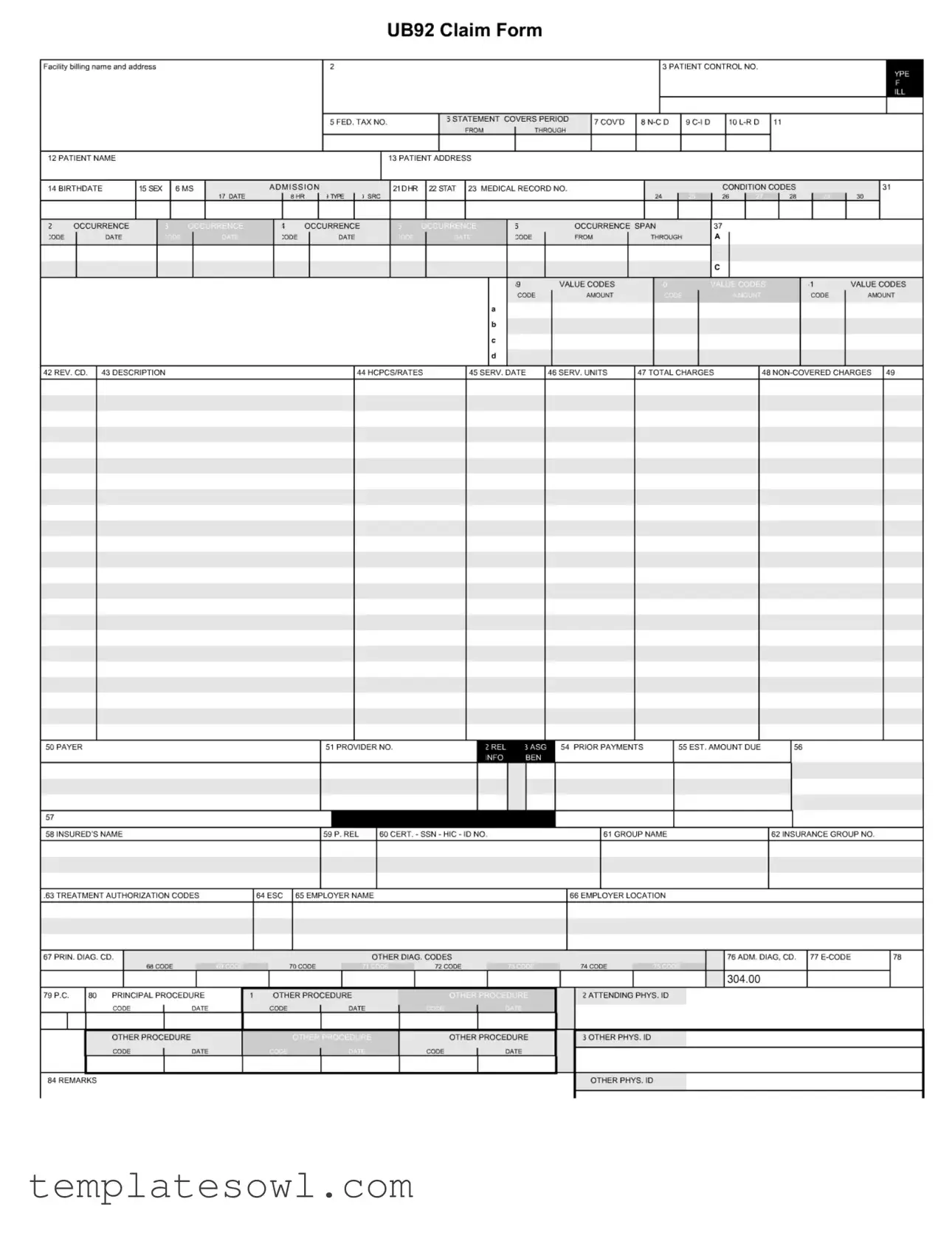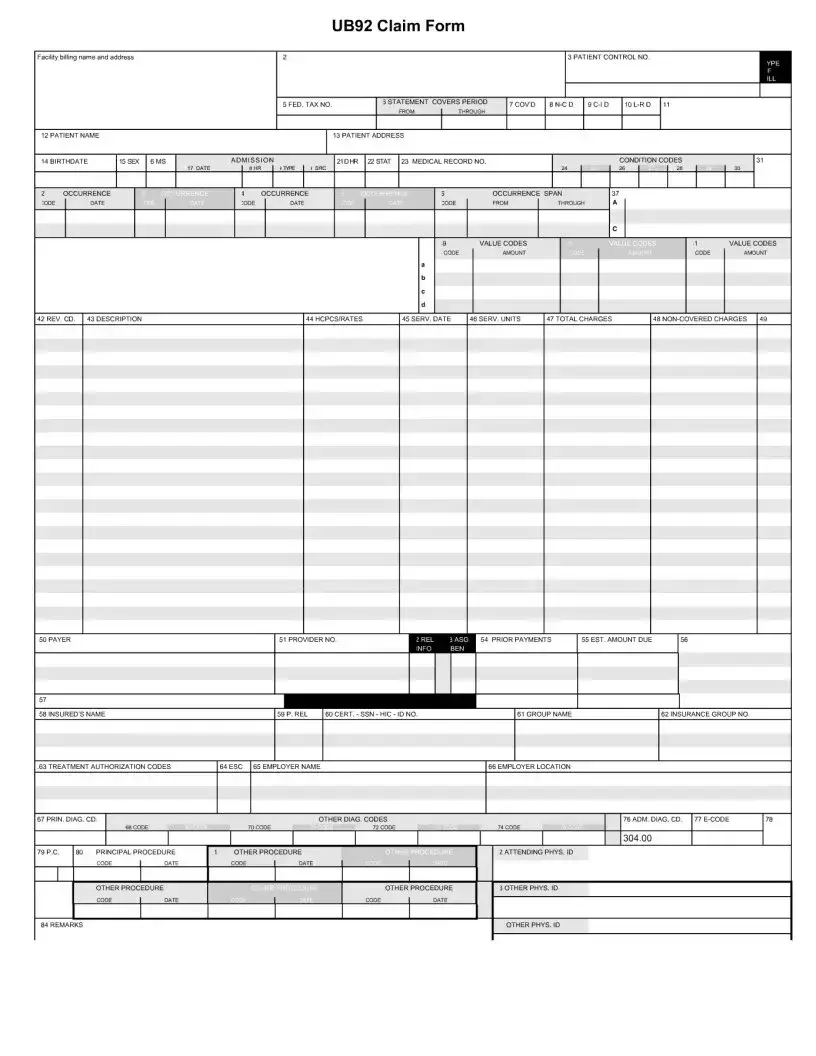What is the UB92 Claim Form used for?
The UB92 Claim Form, also known as the UB-92 or CMS-1450, is used by healthcare facilities to bill for services provided to patients. It is primarily utilized for inpatient hospital services, outpatient services, and skilled nursing facilities. The form consolidates essential patient and service information, allowing for standardized billing across various healthcare providers and insurance companies.
What information is required on the UB92 Claim Form?
Several key pieces of information must be filled out on the UB92 Claim Form. This includes the facility's billing name and address, patient demographics (such as name, birthdate, and address), admission details, medical record numbers, service dates, total charges, and diagnosis codes. Additionally, information on the insurance payer, prior payments, and any treatment authorization codes may also be necessary. It's crucial to ensure that all information is accurate to avoid delays in payment.
How does the UB92 claim process work?
The claim process begins when a healthcare provider completes the UB92 Claim Form after providing services to a patient. This form is then submitted to the appropriate insurance company for reimbursement. The insurance provider reviews the claim for accuracy and checks whether the services are covered under the patient's plan. Upon approval, the insurance company processes the payment, which is sent to the provider. If there are any discrepancies or denials, the provider may need to address issues and resubmit the claim.
What are the common reasons for UB92 claim denials?
Claim denials can occur for various reasons. Some common issues include incomplete or incorrect information on the form, services provided not being covered by the insurance plan, or prior authorization not being obtained when required. Additionally, coding errors or missing documentation can lead to denials. It's essential for providers to review the completed UB92 form thoroughly before submission to minimize the chances of denial.
How can I correct errors on a submitted UB92 form?
If errors are discovered after submission, providers can address this through a few methods. Depending on the insurer's guidelines, they may allow claims to be corrected electronically or via a paper process. If a claim is denied due to errors, providers can submit a corrected claim, noting the changes made. It's important to act promptly, as there are time limits for correcting claims and resubmitting them for payment.

